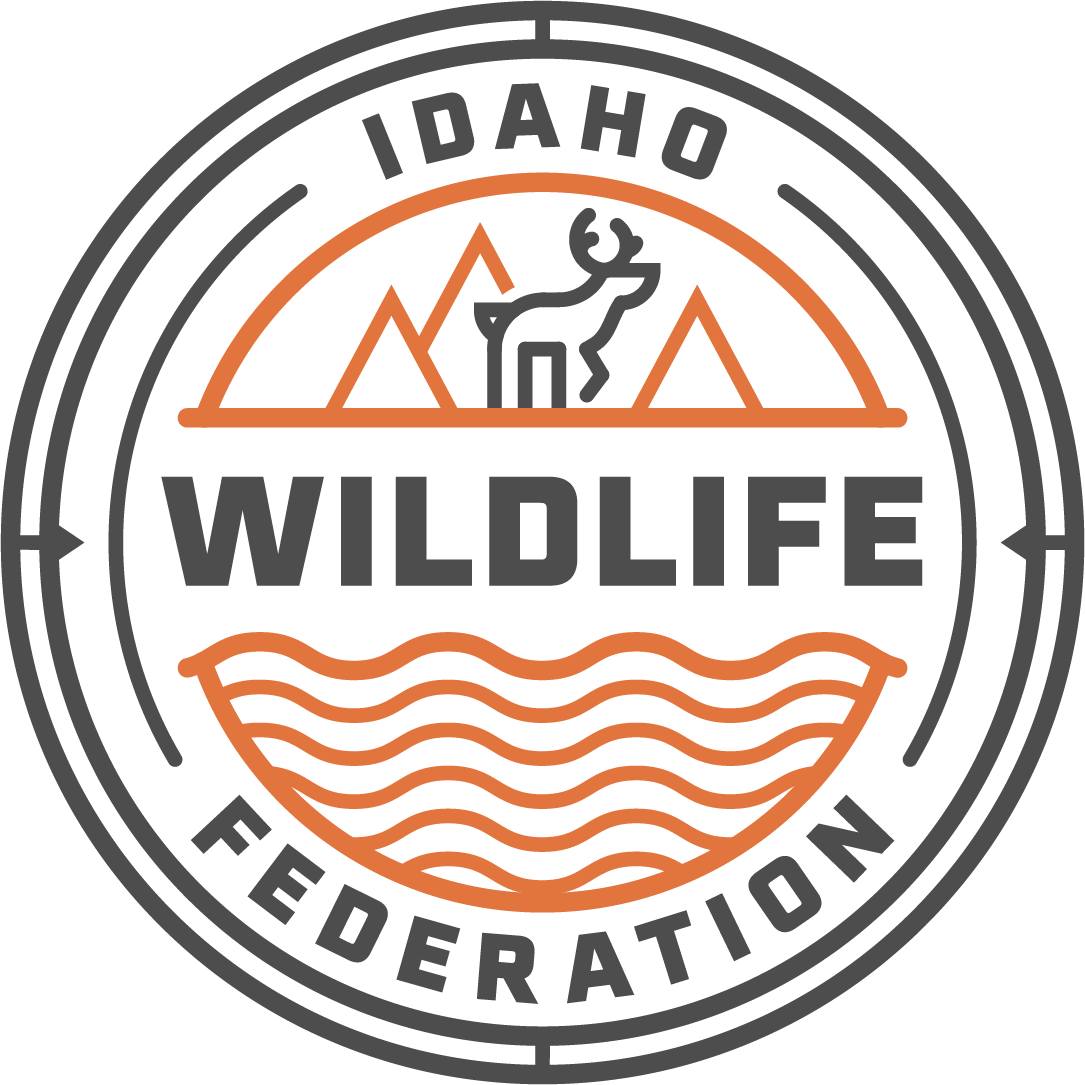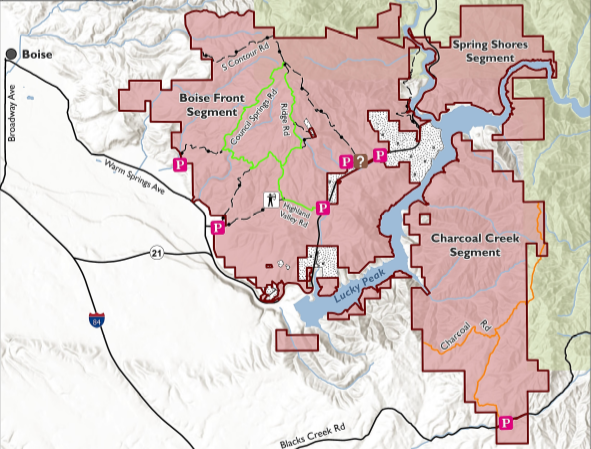Proposed Lucky Peak Trail Bisects Idaho's Densest Mule Deer Habitat
Boise sits just below important winter range utilized by the largest mule deer herd in the state. As many as 8,000 mule deer and 1,800 elk migrate from the Sawtooth mountains to winter in the low-elevation hillsides of the Boise River Wildlife Management Area. If you hunt Unit 39, these are animals you pursue.
Despite this, the U.S. Army Corps of Engineers (Corps) is proposing to punch in a 15-mile multi-use recreation trail in and adjacent to the most productive mule deer winter range in Idaho- land specifically set aside for big game security.
Before a comment extension was granted, IWF submitted comments urging the Corps to reject this proposed action as it would result in destruction of winter range and negatively impact big game during their most vulnerable times. Check out IWF’s supplementary comments here.
A Brief History of the Boise River Wildlife Management Area
As with most areas of Idaho, what is today’s Boise River Wildlife Management Area (BRWMA) was used for thousands of years by native peoples for hunting and fishing. As settlers moved west, lands were slowly developed for economic activity and eventually urban sprawl consumed the open space of river bottom habitat. The need to conserve productive winter range for mule deer became evident. In 1943 the first acquisition of the BRWMA was completed by the Idaho Department of Fish & Game (IDFG) to preserve space for deer and elk that once wintered in the Treasure Valley.
The completion of Lucky Peak Dam and reservoir in 1955 flooded significant portions of that remaining winter range, causing losses of historic migratory routes. To mitigate this loss the Corps preserved lands around the new lake for big game winter range and eventually entered into an agreement with IDFG to allow the Department to dictate the management of those parcels specifically for wildlife. Since then, IDFG and sportsmen and women have made tremendous investments to acquire and conserve the remaining intact habitat, growing the WMA to its current size, which include the Charcoal and Boise Front segments.
IDFG manages the 36,000-acre WMA under a specific WMA plan. Despite ownership differences between federal and state parcels, the overall landscape management prioritizes winter habitat for mule deer and elk and conserves the shrub steppe and riparian habitats so valuable to these species. Motorized vehicles and mountain bike trails are only allowed on designated routes and are subject to seasonal restrictions to keep pressure off the wintering animals specifically to minimize impacts to wildlife and wildlife-based recreation such as hunting.
The proposed trail bisects the Charcoal Creek segment, south of Lucky Peak Reservoir and north of Blacks Creek Road; one of four distinct segments on the BRWMA. The Charcoal Creek Segment contains the highest density of mule deer within the largest migrating mule deer herd in Idaho with as many as 5,812 mule deer, or 69 + deer per square mile.
Map of the Boise River Wildlife Management Area
The Proposed Trail on the WMA.
The proposed trail would cut through Idaho’s largest mule deer herd in the unfragmented Charcoal segment. Overlay the WMA map with the proposed trail map and it is easy to see where conflicts arise.
The Corps’ conclusion in its’ Finding of No Significant Impact (FONSI) and Environmental Assessment (EA) for the 15-mile trail from Lucky Peak Dam to Chimney Rock is inadequate in many ways. Here’s a summary of those inadequacies:
The Corps justifies the trail with a seasonal closure from November 16-April 30, despite existing enforcement-staff shortfalls and as many as 12,000 illegal user visits at the close by Homestead trailhead in one winter. Such violations at this proposed trail will result in a significant negative impact to big game during their most vulnerable state.
83% of fires in the Boise metro area are human-caused (see page 20 of the wma plan), incerasing invasive weed spread while decreasing native shrubs and grasses that provide critical winter forage for big game. Construction of a new trail in this sensitive and unfragmented landscape will bring thousands of people to the area and risk even more human-caused fires.
The Boise front already contains 190 miles of trails, which attract hundreds of thousands of users. The Charcoal segment is one of the last areas of unfragmented winter habitat, sheltering the densest and largest muley herd in our state. It should remain intact and this trail should be relocated.
IWF staff and our members mountain bike and enjoy multiple forms of recreation. We recognize the draw to increase opportunities near Idaho’s largest city. But it is our duty to balance these needs with the needs of wildlife that we cherish- In this case, the highest density of winter mule deer amidst the largest mule deer population in the state, with significant sportsmen investment to conserve these remaining unfragmented areas.
IWF is committed to working with agencies and partner organizations to perpetuate this herd and minimize conflicts that will certainly come if the proposed action proceeds. If this area is not grounds for concern, possibility no lands within Idaho are.
IWF worked to extend the comment period until August 20th. Speak up for our wildlife below.
Thumbnail photo by Tom Koerner/USFWS


